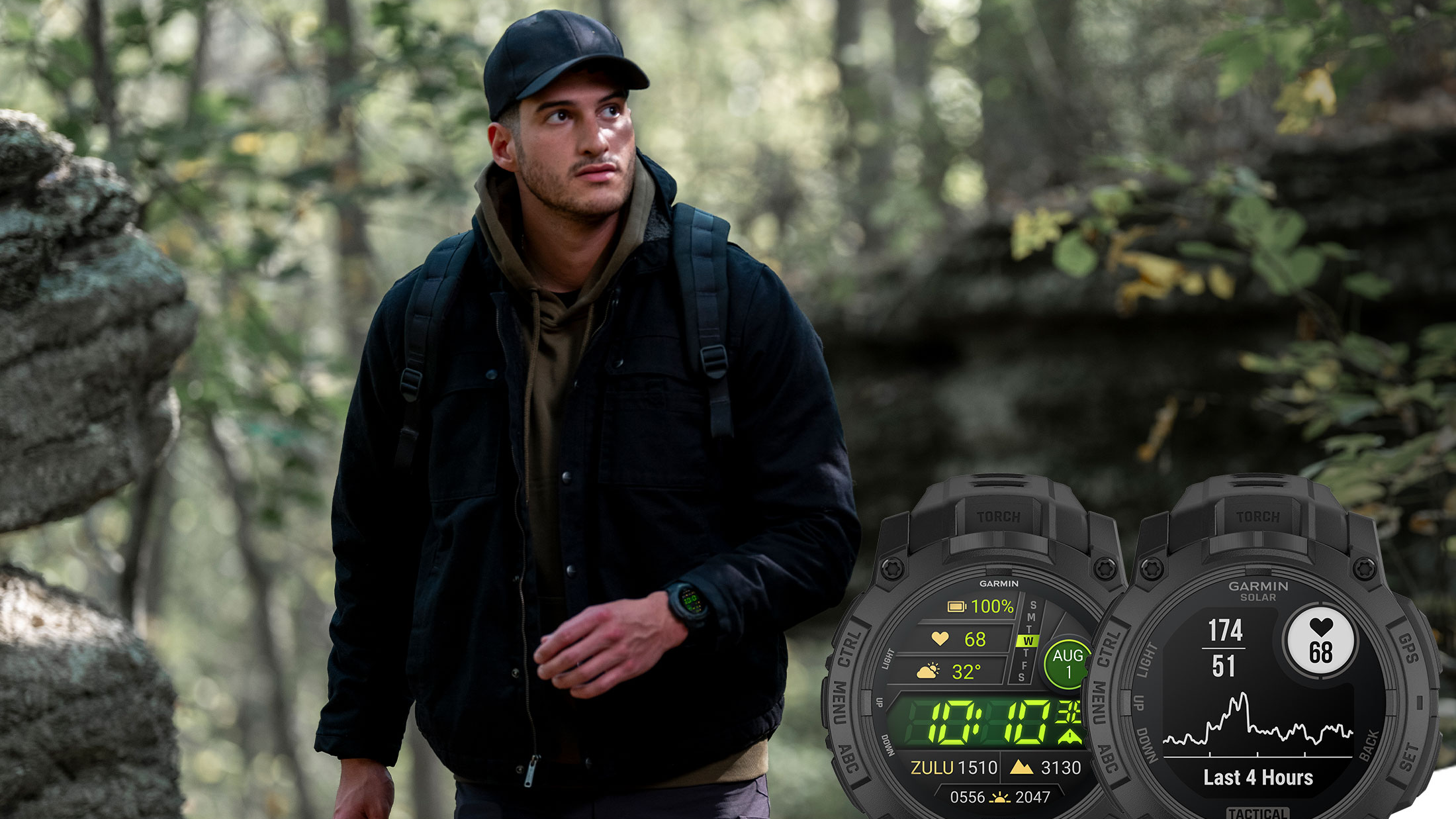
The line between medical devices and sports watches is blurring, and soon the watch on your wrist could effectively be a mini clinic that gives you a complete picture of your health - not just one or two interesting stats in isolation.
Last year, Rockley Photonics, which develops advanced tech that uses light analysis to track biometrics, announced that it had developed a ‘clinic on the wrist’ – a wearable module capable of measuring stats including core body temperature, blood pressure, hydration, and blood alcohol and glucose. Now, as the company’s CEO Dr Andrew Rickman explains, that tech is nearly ready to hit the mainstream.
Speaking to Advnture, Dr Rickman explained that over the last 20 years, wearables have evolved from extensions or your phone or laptop to devices that help you understand and improve your health – but they have the potential to do much more.
A lab on a chip
“You've got that green LED measuring the heart rate, and a red and infrared one that measures your blood oxygen level,” Dr Rickman said. “Some have at least a couple of electrodes, and accelerometers to measure steps etc, but the idea that we came up with was, what happens if you put something much, much, much more powerful into a wearable? You know, what would be possible?”
Rockley set out to create what’s essentially a set of clinical instruments on a photonic chip, and make that chip small enough to fit into a wearable. This tiny unit would be able to monitor not just one biomarker, but lots - all non-invasively.
What happens if you put something much, much, much more powerful into a wearable?
Dr Andrew Rickman
Its engineers approached this problem from the field of silicon photonics - making chips on a wafer that process, transmit, and sense information optically (as opposed to electronically, as with microelectronics). This opened up a whole range of optical techniques, particularly chemical spectroscopy.
“We’ve basically taken a $100,000 benchtop instrument that you can put your finger in to measure your blood glucose, your lactate, and a lot of other things non-invasively – we’ve taken that instrument, and we’ve been able to shrink it onto a chip,” said Dr Rickman. “That sounds simple, but it cost about half a billion dollars to develop the manufacturing technology to enable this.”
Advnture Newsletter
All the latest inspiration, tips and guides to help you plan your next Advnture!
The wearables battle
Although he can’t name names, Dr Rickman says that Rockley is now working with six out of the top 10 consumer device companies, as well as medical device manufacturers. “The response from everyone has been extraordinary,” he told Advnture. “I’d never seen this level of commercial traction for something new, And it’s really coming to a head.” However, he says that there’s currently a battle happening in wearables between the consumer and medical device makers.
On one hand, consumer devices are no longer just an extension of your phone, and are establishing their own identity – and a large part of that is health monitoring. “These large consumer device companies who have gone into this field, they’re all salivating over the healthcare dollars that are out there, and trying to migrate their devices, closer and closer to that kind of medical market,” Dr Rickman explains.
“And in the other direction, the medical device guys are feeling threatened by that, and so they’re trying to fight their way out of the hospital, clinic, and surgery environment to monitor patients on a continuous basis and establish a foothold in wearables in our everyday life.”
Rockley is at the axis of all that, and is working with both sides. For the consumer wearables companies, it’s working to design its chip technology with all the associated firmware and software to fit into their wearables, and for those on the medical side it’s making the entire device. This will come with software that can basically be plugged into the necessary data management systems.
Human studies
Dr Rickman explains that not only does Rockley develop hardware and software for its ‘wearable lab’, it also has to do all the necessary human studies. “It’s not a sensor, it's an instrument covering a huge amount of spectral data, and you have to train the algorithms for each biomarker based on human studies where you're simultaneously measuring those individuals with the gold standard,” he says.
“So for example, if we’re measuring somebody's core body temperature from the wrist, we're using this spectroscopic technique and measuring characteristics of water. We're measuring the temperature gradient into your skin and it correlates your core body temperature, but in order to train the algorithm, we have human studies of many, many people, and we actually get them to swallow a transmitter tablet, measuring their core body temperature.
With a range of biomarkers, you’ve got the ability to predict things early
Dr Andrew Rickman
"Then we put them through a protocol which basically ramps that core body temperature up and down. And through those that work, we've basically shown that we can measure your core body temperature.” In fact, he says, the instrument and algorithm can measure a fever more accurately than the thermometer that you might have sitting in your medical cabinet at home.
For both consumer and medical device makers, the most valuable biomarker is blood sugar, and the second is blood pressure. However, Dr Rickman says what’s most exciting isn’t just one or two biomarkers taken in isolation, but a combination that give you a holistic view of your health.
“A lot of research has been done to show that you can diagnose just about every disease early, or give a warning that can be investigated. With a range of biomarkers, you’ve got the ability to predict things early, which can lead to preventative health because someone can change their lifestyle or diet, and avoid the collision course that they’re on.”
Hr says that both the consumer and medical companies have been interested in giving people a bigger picture, and that could have a profound impact.
Coming soon...
So when can we expect this kind of tech on our wrists? “For consumer wearables, they’ll be in production in the fourth quarter,” Dr Rickman says. You can expect to start seeing the fruits of those partnerships towards the end of next year.
Meanwhile, Rockley has been finishing work on its own device for the medical field. “We’ve designed something – we’ll leave the world to decide whether it’s attractive or not, but it’s not designed to look miserable and clinical like a typical hospital device, but that’s where it’s going. It is designed to have longer battery life than your normal smartwatch, because it’s not doing a lot of the other things smartwatches do.
"It's designed in a hospital environment, for example, you can have a plastic strap, but you can also have a disposable strap so it’s easy to clean, it doesn't have a screen, so it's subtly different to what you would look for in a consumer device.
“But on the other hand, you know, if consumers wake up one day and realise the benefit of continually monitoring all of these biomarkers and having the kind of AI doctor in the background looking after them, and this thing just sits in the background and their body and maybe, you know maybe back into the consumer world and that that is really where our med tech customers, I think they would love that that progression to occur.”
- Best GPS watches: find your perfect training tool

Cat is the editor of Advnture, She’s been a journalist for 15 years, and was fitness and wellbeing editor on TechRadar before joining the Advnture team in 2022. She’s a UK Athletics qualified run leader, and in her spare time enjoys nothing more than lacing up her shoes and hitting the roads and trails (the muddier, the better), usually wearing at least two sports watches.
